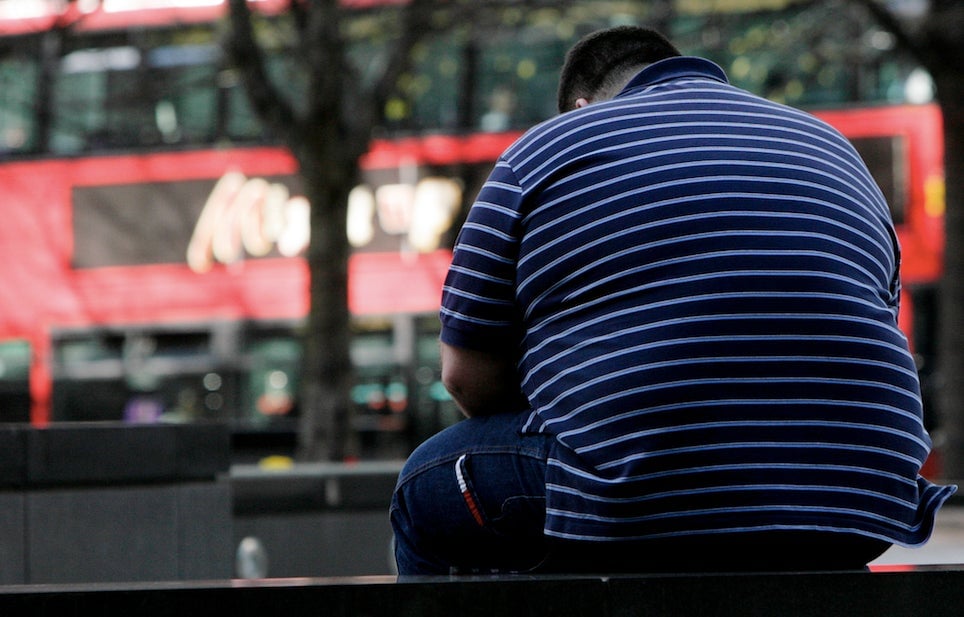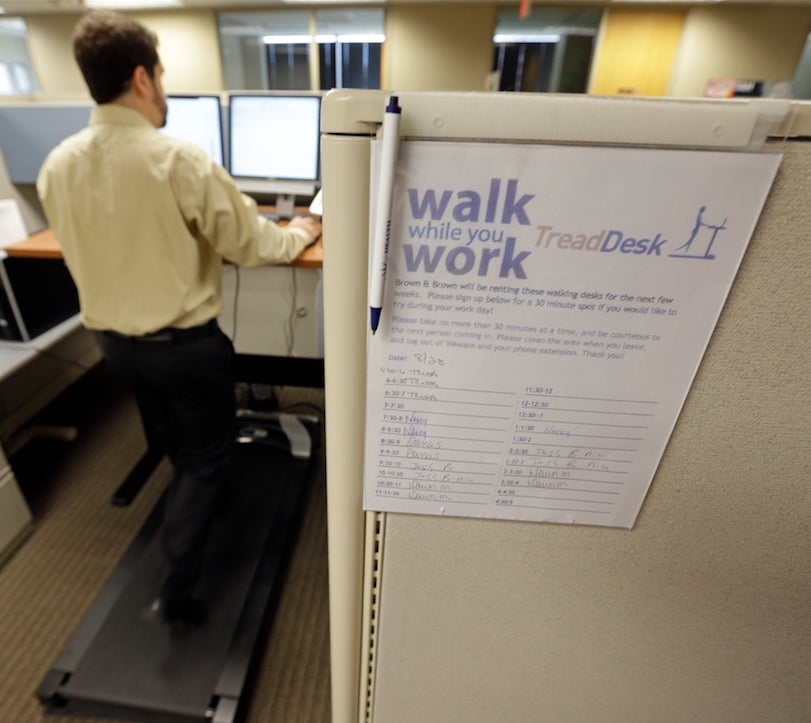Why not even exercise will undo the harm of sitting all day—and what you can do about it
A large review recently published in The Journal of the National Cancer Institute confirms what we’ve been hearing for years: Sitting can be fatal.


A large review recently published in The Journal of the National Cancer Institute confirms what we’ve been hearing for years: Sitting can be fatal.
It’s been linked to cancer, diabetes, and cardiovascular disease. In this latest meta-analysis, Daniela Schmid and Michael F. Leitzmann of the University of Regensburg in Germany analyzed 43 observational studies, amounting to more than 4 million people’s answers to questions about their sitting behavior and cancer incidences. The researchers examined close to 70,000 cancer cases and found that sitting is associated with a 24% increased risk of colon cancer, a 32% increased risk of endometrial cancer, and a 21% increased risk of lung cancer.
The really bad news: You can’t exercise away the habit’s harmful effects. “Adjustment for physical activity did not affect the positive association between sedentary behavior and cancer,” the authors write. Even participants who achieved the daily recommended levels of physical activity were at the same risk as those who spent their day sitting. ”[The results] indicate that the increased risk of cancer seen in individuals with prolonged time spent sedentary is not explained by the mere absence of physical activity in those persons,” the researchers say.
Some reasons why

1. Sitting –> weight gain –> elevated risk
When you’re sedentary, you burn only about a calorie a minute. Being overweight or obese is a known risk factor for many common chronic diseases. The cancer risk, the authors note, comes about because obesity can promote insulin resistance and bodily inflammation, two of the many things known to increase increase the risk of cancer for people of above-average body weight. Interestingly, the authors also mention the link between obesity and vitamin D deficiency, which has been associated with an elevated risk of colon cancer.
2. Sitting –> inactive muscles –> harmful biological signaling
Sitting also means your large postural support muscles, such as the quadriceps and glutes, aren’t doing anything. When active, these muscles produce a suite of beneficial molecules. “Skeletal muscles have an electrical activity in them when they’re working which is like the light switch that turns on all these healthy things in the muscles,” explained Marc Hamilton, director of the Inactivity Physiology Program at the Pennington Biomedical Research Center in Louisiana in a recent webinar. When you sit, you turn these light switches off.
A widely studied casualty of this blackout is lipoprotein lipase, an enzyme that Hamilton likens to “a vacuum cleaner for fats in the blood stream.” When Hamilton forced rats to remain inactive for 24 hours, their lipoprotein lipase activity became virtually nonexistent (a 90%-95% reduction). This led to a more than 75% drop in the ability of their muscles to remove noxious fats from the bloodstream, as well as a significant decrease in “good” cholesterol (HDL cholesterol).
Hamilton has also found that just a few hours of sitting suppresses a gene that helps keep your cardiovascular system healthy by controlling inflammation and blood clotting. The worrying thing, Hamilton told Runner’s World, is after a day of sitting, exercise doesn’t seem to turn the gene back on. As the article pithily put it: “Sitting is the new smoking—even for runners.”
What to do
But there is some good news. Studies have found that simply interrupting your sitting time with short breaks of movement—just standing or walking slowly—has beneficial effects. In a 2008 study published in Diabetes Care, researchers from the University of Queensland in Australia equipped 168 adults with an accelerometer, measuring their every move for seven consecutive days. Those who took more breaks from sitting had narrower waists, and lower body mass index, triglycerides and glucose tolerance—all important measures for obesity and metabolic health. The average length of their breaks: just four and a half minutes.

Pinpointing just exactly how long or frequent these breaks need to be is still up for investigation. More recent research show signs of improved glucose metabolism with one minute and 40 seconds of walking every 30 minutes for a nine-hour sitting period, as well as two-minute bouts of light-intensity treadmill walking every 20 minutes throughout a five-hour sitting period. In short, getting up and walking around at least twice an hour can keep your skeletal muscles turned on and lower the risk of disease.
Finally, sitting doesn’t have to be the default. Though we’re still awaiting a scientifically-backed, quantitative recipe for reducing the damage, there are some simple changes you can make to get out of your seat. You can take walking meetings, try standing desks (here’s how to build your own) or treadmill desks, take more breaks throughout the day, or add some exercise to your commute by biking, walking or simply parking further from the office entrance. Or, if you’re feeling particularly ambitious, you could try what Dan Kols, a writer for New York magazine, did, and eliminate sitting entirely. I wish your heels good luck.